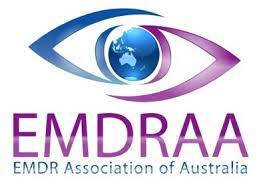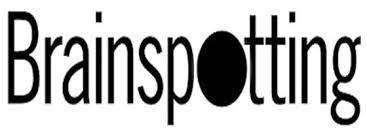Hypnosis has been shown to alleviate the subjective distress of patients with asthma: there were less frequent attacks, and less medication was required. (1)
In another study comparing Hypnosis and relaxation therapy the improvement with the Hypnotherapy group was much greater. And only Hypnosis subjects showed an improvement in physiologic measures of respiration. (2)
References: (1) Maher-Loughnan, G.P. (1970). “Hypnosis and AutoHypnosis for the Treatment of Asthma.” International Journal of Clinical and Experimental Hypnosis, 18, 1- 14., (2) Maher-Loughnan, G.P., MacDonald, N., Mason, A.A. & Fry, L. (1962). “Controlled Trial of Hypnosis in the Symptomatic Treatment of Asthma.” British Medical Journal, 2, 371-376.
Following Hypnotherapy, patients with arthritis achieved significant decreases in pain, anxiety, and depression, and an increases in beta-endorphin-like immuno-reactive material.
References: Domangue, B.B., Margolis, C.G., Lieberman, D. & Kaji, H. (1985). “Biochemical Correlates of Hypnoanalgesia in Arthritic Pain Patients.” Journal of Clinical Psychiatry, 46, 235-238.
The Harvard Medical School conducted research on the use of hypnosis to enhance physical healing. Twelve people with a recent bone fracture were divided into two groups. One group received hypnosis and the other group served as control. Both groups received standard orthopedic treatment. The hypnosis group had individual hypnotic sessions and listened to audio tapes designed to increase bone healing. Xray and orthopedic evaluations were made during the 12 weeks of the experiment. The results showed a faster healing for the hypnosis group at week 9 of the experiment. Xrays revealed a notable difference at the edge of the fracture at week 6 of the experiment. The hypnosis group also had better mobility and used less pain killers. The researchers conclude by saying that “despite a small sample size…. these data suggest that hypnosis may be capable of enhancing both anatomical and functional fracture healing, and that further investigation of hypnosis to accelerate healing is warranted.
References: Ginandes, CS, Rosenthal, DI.1999, “Using hypnosis to accelerate the healing of bone fractures: a randomized controlled pilot study”, Therapy Health Medicine, March, 5(2), pp.67-75.
Women with metastatic breast cancer who received group Hypnosis therapy were able to reduce their pain experience by 50% compared to a control group. (1)
At a 10-year follow-up of these same women, the Hypnosis treatment group had double the survival rate of the control group.(2)
Both adolescent and adult cancer patients undergoing chemotherapy have fewer symptoms of anticipatory nausea and vomiting following Hypnotic interventions. (3)
References: (1) Spiegel, D. & Bloom, J.R. (1983b).”Group therapy and Hypnosis Reduce Metastatic Breast Carcinoma Pain.” Psychosomatic Medicine, 45, 333-339., (2) Spiegel, D., Bloom, J.R., Kraemer, H.,C. & Gottheil, E. (1989a) “Effect of Psychosocial Treatment on Survival of Patients with Metatastic Breast Cancer.” Lancet pp. 888-891. (3) Zeltzer, L.; LeBaron, S. & Zeltzer, P.M. (1984).The Effectiveness of Behavioral Intervention for Reduction of Nausea and Vomiting in Children and Adolescents Receiving Chemotherapy.” Journal of Clinical Oncology, 2, 683-690. Cotanch, P., Hockenberry, M. & Herman, S. (1985). “Self-Hypnosis Antiemetic Therapy in Children Receiving Chemotherapy.” Oncology Nursing Forum, 12, 41- 46. Zeltzer, L., LeBaron, S. & Zeltzer, P.M. (1984).
Hypnotherapy has been used successfully to prolong pregnancy and prevent premature delivery. (1)
In Britain 55% of birthing women using hypnosis required no medication for pain relief, compared with 22% of women in non-hypnosis groups. In two other reports 58% of women using hypnotic analgesia required no medication. And five other reports quoted 60-79% of women using hypnosis required no medication.
In another study subjects given hypnosis reported reduced pain, shorter stage 1 labours, less medication, higher Apgar scores, more frequent spontaneous deliveries than other group. Some had lower depression scores after birth than the other groups.(2)
References: (1) Schwartz, M. (1963) The Cessation of Labor Using Hypnotic Techniques.” American Journal of Clinical Hypnosis, 5, 211-213. (2) Harmon, T.M., Hynan, M., & Tyre, T.E. (1990). “Improved obstetric outcomes using hypnotic analgesia and skill mastery combined with childbirth education.” Journal of Consulting and Clinical Psychology, 58, 525, 530, 1990.
Cognitive Hypnotherapy for Depression: An Empirical Study: To investigate the effectiveness of cognitive hypnotherapy (CH), hypnosis combined with cognitive behavior therapy (CBT), on depression, 84 depressives were randomly assigned to 16 weeks of treatment of either CH or CBT alone. At the end of treatment, patients from both groups significantly improved compared to baseline scores. However, the CH group produced significantly larger changes in Beck Depression Inventory, Beck Anxiety Inventory, and Beck Hopelessness Scale. Effect size calculations showed that the CH group produced 6%, 5%, and 8% greater reduction in depression, anxiety, and hopelessness, respectively, over and above the CBT group. The effect size was maintained at 6-month and 12-month follow-ups. This study represents the first controlled comparison of hypnotherapy with a well-established psychotherapy for depression, meeting the APA criteria for a “probably efficacious” treatment for depression. (1)
Alternative Treatments for Long-Term Depressed Mood: Meditation and Hypnosis The purpose of this study is to examine the effectiveness to two alternative treatments for long-term depressed mood: mindfulness meditation and hypnosis. The need to find effective treatments for those suffering from long-term low-to-moderate level depression has been known for over a century. Although, there have been some recent advances in the types of drug and psychotherapy treatments available for this condition, some people do not respond to such interventions, have considerable side effects (from the drugs), or are not satisfied for other reasons with these treatment options.
The present study represents an innovative investigation into two alternatives to traditional treatments for long-term depressed mood: mindfulness meditation (plus gentle hatha yoga) and hypnosis in a group therapy format. Although both meditation and hypnosis have shown success in treating stress, anxiety, and pain in studies of non-clinical populations, neither has been systematically investigated as a possible treatment for long-term depressed mood. (2)
References: (1) Assen Alladin and Alisha Alibhai (2000) The International Journal of Clinical and Experimental Hypnosis; Volume 55, Number 2 – April 2000., (2) Spiegel, D. MD; Butler, L.D. Ph.D. Xin-Hua Chen; Abramson, M. DDS, Waelde, L. Ph.D. Mental Insight Foundation
Most clinicians and researchers agree that stress affects the course of dermatitis and eczema, and reducing stress levels has a positive effect on the course of the disease. Emotional factors have been shown to have a strong correlation with onset of the disease and also with flare-ups. Further more, several documented case studies have revealed that hypnosis can offer a successful treatment for sufferers.
References: Kantor, S.D. (1990). Stress and psoriasis. Psoriasis Research Institute, Palo Alto, California 94301. Cutis (USA) Oct 1990, 46 (4) p321-2
Haemophiliac patients taught self-hypnosis significantly reduced both their level of self-reported distress and the amount of the factor concentrate required to control bleeding when compared with a control group of patients who did not undergo Hypnosis.
References: Swirsky-Saccetti, T.; Margolis, C.G. (1986).”The Effects of a Comprehensive Self- Hypnosis Training Program on the Use of Factor VIII in Severe Hemophilia.” International Journal of Clinical and Experimental Hypnosis, 34, 71-83.
Hypnotherapy is one of the most successful treatment methods, giving 80+% success rate for abdominal pain and distension. It often results in assisting with other problems such as migraine and tension headaches. With patients who have severe chronic IBS, it was Hypnotherapy patients that showed dramatic improvement in all measures, and they maintained that improvement at a two year follow-up. (1)
There are a number of clinical studies and a body of research on the effectiveness of hypnotherapy in the treatment of irritable bowel syndrome (IBS). Likewise, there exists research (Thinkshift Research) demonstrating the efficacy of cognitive-behavioral therapy (CBT) in the treatment of IBS. However, there is little written about the integration of CBT and hypnotherapy in the treatment of IBS and a lack of clinical information about IBS-induced agoraphobia. This paper describes the etiology and treatment of IBS-induced agoraphobia. Cognitive, behavioral, and hypnotherapeutic techniques are integrated to provide an effective cognitive-behavioral hypnotherapy (CBH) treatment for IBS-induced agoraphobia. This CBH approach for treating IBS-induced agoraphobia is described and clinical data are reported. (2)
References: (1) Whorwell P.J; Prior A; Faragher E.B. (1988 & 1987). Whorwell, P.J., Prior, A. & Faragher, E.B. (1984). “Controlled Trial of Hypnotherapy in the Treatment of Severe Refractory Irritable-Bowel Syndrome.” Lancet, pp. 1232-1234. Whorwell, P.J., Prior, A. & Colgan, S.M. (1987). “Hypnotherapy in Severe Irritable Bowel Syndrome: Further Experience.” Gut, 28, 423-425., (2) Golden W.L. (2000) The International Journal of Clinical and Experimental Hypnosis; Volume 55, Number 2 – April 2000
Hypnosis is highly effective in the treatment of chronic migraine headaches. All Hypnotic methods appear to be superior to standard treatment relying on pharmacological approaches alone. Patients treated with Hypnosis had a significant reduction in severity and the number of attacks compared to a control group treated with traditional medications. At the one year follow-up the number of patients in the Hypnosis group who had no headaches for over three months was significantly higher. (1)
The 12-member National Institute of Health Technology Assessment Panel on Integration of Behavioral and Relaxation Approaches into the Treatment of Chronic Pain and Insomnia (1996) reviewed outcome studies on hypnosis with cancer pain and concluded that research evidence was strong and that other evidence suggested hypnosis may be effective with some chronic pain, including tension headaches. This paper provides an updated review of the literature on the effectiveness of hypnosis in the treatment of headaches and migraines, concluding that it meets the clinical psychology research criteria for being a well-established and efficacious treatment and is virtually free of the side effects, risks of adverse reactions, and ongoing expense associated with medication treatments. (2)
References: (1) Anderson, J.A., Basker, M.A, Dalton, R. (1975). “Migraine and Hypnotherapy.” International Journal of Clinical and Experimental Hypnosis, 23, 48-58., (2) Hammond C. (2000) The International Journal of Clinical and Experimental Hypnosis; Volume 55, Number 2 – April 2000
Hypnosis was found to be effective in reducing pain and discomfort associated with repeated unpleasant medical interventions in a study of children with cancer. (1)
A significant reduction of pain and dysphoria was found following Hypnosis in a study of 19 patients with a variety of musculoskeletal disorders. (2)
References: (1) Hilgard, E.R. (1977). “Divided Consciousness: Multiple Controls in Human Thought and Action”. NY: John Wiley. 1977, (2) Domangue, B.B., Margolis, C.G., Lieberman, D. & Kaji, H. (1985). Biochemical Correlates of Hypnoanalgesia in Arthritic Pain Patients.” Journal of Clinical Psychiatry, 46, 235-238
Students taught self-hypnosis showed a significant reduction in anxiety scores (maintained at 6-month follow-up) then a control group. (1)
The group who received hypnosis had a greater expectation for change and that change was achieved, than those who had non-hypnotic treatment.
50% of patients afraid of flying were improved or cured after Hypnosis treatment.
References: (1) Stanton, H. E. (1994), (2) Schoenberger, N. E.; Kirsch, I.; Gearan, P.; Montgomery, G.; Pastyrnak, S.L. (1997). (3) Spiegel, D. (1998) Report in the Harvard Mental Health Letter, September 1998, vol. 15, p. 5-6
In a recent stop smoking study, where smokers attended individual hypnotherapy for stop smoking over three sessions, 81% had stopped smoking after the treatment ended, and at a 12 month follow-up nearly 50% remained smoke free. And 95% of the people were satisfied with their treatment.
References: (1) Elkins GR, Rajab MH. (2004) “Clinical hypnosis for Smoking Cessation: preliminary results of a three session intervention.” International Journal of Clinical and Experimental Hypnosis 2004 Jan; 52 (1):73-81
A trial compared Hypnosis with biofeedback or a combination of both. All groups had significant reduction in blood pressure. (1)
However, at six-month follow-up only patients receiving Hypnosis had maintained the reduction. (2)
References: (1) Friedman, H. & Taub, H. (1977). “The Use of Hypnosis and Biofeedback Procedures for Essential Hypertension.” International Journal of Clinical and Experimental Hypnosis, 25, 335-347.
(2) Friedman, H. & Taub, H. (1978). “A Six Month Follow-up of the Use of Hypnosis and Biofeedback Procedures in Essential Hypertension.” American Journal of Clinical Hypnosis, 20, 184-188
Patients trained with Hypnosis before surgery had significantly shorter stays in hospital. Research shows that Hypnosis methods have been used successfully for anxiety associated with medical procedures.
References: (1) Rapkin, D.A., Straubing, M., Singh, A. & Holroyd, J.C. (1988). “Guided Imagery and Hypnosis: Effect on Acute Recovery from Head and Neck Cancer Surgery” Paper presented at the Annual Meeting of the Society for Clinical and Experimental Hypnosis, Asheville, N.C. Spiegel, D, (1998). Report in the Harvard Mental Health Letter, September 1998, vol. 15, p. 5-6.
Prepubertal children respond to Hypnotherapy almost without exception, although adults sometimes do not. Clinically, many adults who fail to respond to hypnotherapy will heal with individual hypnoanalytic (combination of hypnotherapy and psychotherapy) techniques. By using hypnoanalysis on those who failed to respond to hypnotherapy, 33 of 41 (80%) consecutive patients were completely cured. Self-hypnosis was not used. (1)
There was a particularly interesting report of hypnosis used to treat a 7-year-old girl who had 82 common warts. The warts had been present for 12-18 months and were not amenable to any of the routine medical treatments. Hypnotic suggestions were given for the facial warts to disappear before warts from the rest of the body. After 2 weeks, eight of 16 facial warts were gone, with no other changes. After three additional biweekly sessions, all 82 warts were gone. This was, to our knowledge, the first reported case of systematic wart removal in children and the researchers concluded that there is an intimate relationship between psychological mechanisms and the immune system. (2)
References: (1) Ewin DM Hypnotherapy for warts (verruca vulgaris): 41 consecutive cases with 33 cures. Tulane Medical School, New Orleans, LA. Am J Clin Hypn (UNITED STATES) Jul 1992, 35(1) p1-10
(2) Hypnotherapy of a child with warts.Noll RB Department of Pediatrics and Human Development, Michigan State University, East Lansing 48824.J Dev Behav Pediatr Apr 1988, 9 (2) p89-91
Australian Counselling Association (ACA#8312), Australian Association of Clinical Hypnotherapy and Psychotherapy (AACHP#2003094), EMDR Association of Australia (EMDRAA#1001198), Psychotherapy and Counselling Federation of Australia (PACFA Reg.Clinical#30404)





Arcadia, Ardmona, Ballendella, Bonn, Bunbartha, Burnewang, Byrneside, Carag Carag, Colbinabbin, Cooma, Coomboona, Corop, Deakin, Dhurringile, Echuca, Elmore, Fairy Dell, Gillieston, Girgarre, Girgarre East, Harston, Kanyapella, Kialla, Kotupna, Koyuga, Kyabram, Kyabram South, Kyvalley, Lancaster, Merrigum, Moama, Moora, Mooroopna, Mooroopna North, Murchison, Murchison North, Nanneella, Rochester, Rushworth, Shepparton, Shepparton North, Stanhope, Stanhope South, St. Germains, Strathallan, Tallygaroopna, Tatura, Tatura East, Timmering, Tongala, Toolamba, Toolamba West, Undera, Waranga, Waranga Shores, Wyuna, Wyuna East, Yambuna, Zeerust.